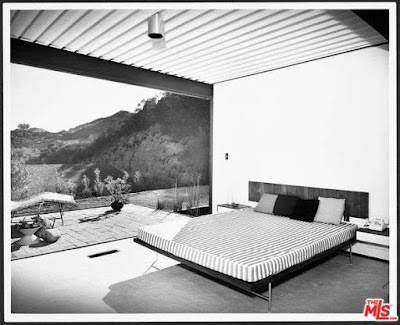A couple of weeks ago, I was contacted by Inmod and asked to review a piece of furniture from their new
Origins line, and I agreed to do so.
Today I received the
Wire Base Side Table, which is Inmod's reproduction of the Charles and Ray Eames Wire Base Low Table. I must say that it is quite faithful to the original design in dimension (H 10" x W 15.5" x D 13.25") and appearance. The table was designed to be stackable or used side-by-side as a low coffee table, and because of its size, I think that would almost be necessary. Alone it could look awkwardly small, unless paired with just the right size chair or sofa.
As soon as I lifted it from the box (fully assembled, incidentally), I immediately noted its substantial weight. The layered plywood top with flat melamine surface is extremely attractive, as is the sturdy wire base. The workmanship is impressive, and the Inmod price of $179 (currently on sale for $99) is more economical than the licensed table produced by Herman Miller and sold for $205 (or Design Within Reach's $215 for the Herman Miller version), especially since, as far as I can tell, there is virtually no difference in the products. Like the tables offered by the other retailers, Inmod's table is available in black or white.
The original Eames design was inspired by the low profile of Japanese furnishings, and, according to the DWR site, was used in the Eames home for a tea ceremony including Isamu Noguchi and Charlie Chaplin.
Overall, I am extremely pleased with Inmod's Wire Base Side Table. It will go upstairs in my grandsons' gameroom, where it will fit perfectly between two low-slung kids' chairs. If this piece is representative of their classic mid-century
Origins line, I can't wait to see more!
Note: I partnered with Inmod for this post and was encouraged to provide an objective review. All thoughts and opinions are my own.





















































